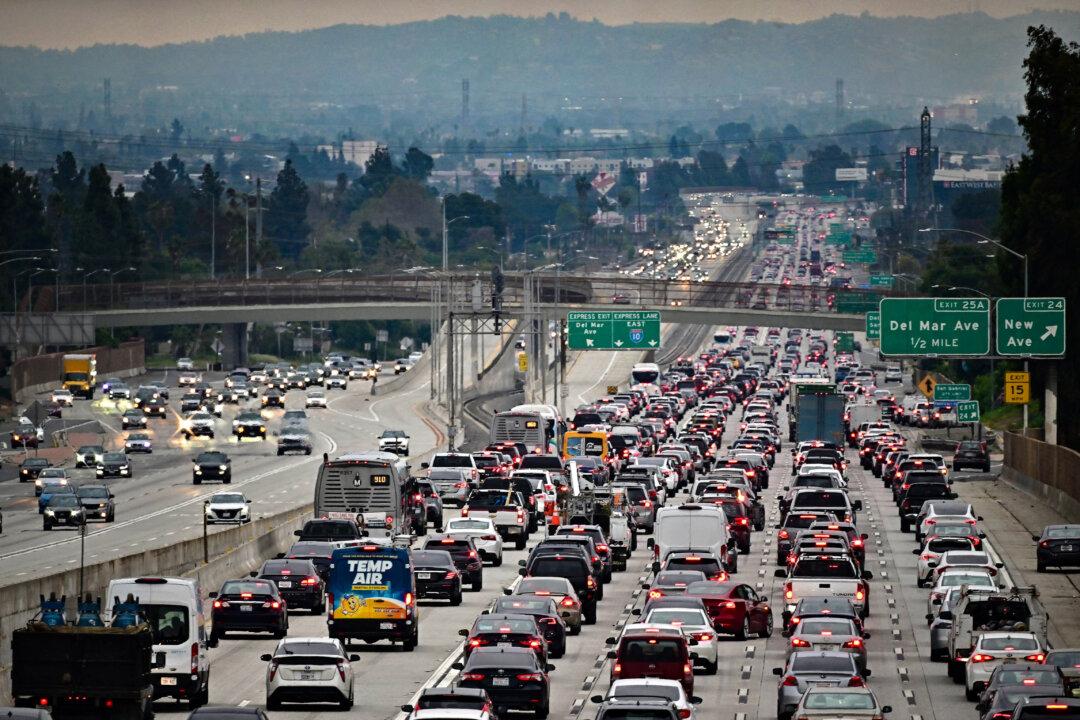Buoyed by international migration and decreased mortality, California’s population increased by more than 67,000 people in 2023, according to newly released data from the state’s Department of Finance.
After declining since the pandemic, the population rebounded slightly last year to more than 39.1 million due to legal foreign migration, fewer deaths, and natural population increases.
“People from across the nation and the globe are coming to the Golden State to pursue the California Dream and experience the success of the world’s 5th largest economy,” California Gov. Gavin Newsom said in an April 30 press release. “From the Inland Empire to the Bay Area, regions throughout California are growing—strengthening local communities and boosting our state’s future.”
Foreign migration—not counting those that entered the country illegally—spiked more than 26 percent compared to 2022, with 114,200 individuals joining the state’s population.
Immigration totals are now approaching pre-pandemic figures, as 119,000 international immigrants became California citizens in 2019, representing a difference of about 5,000 from last year’s totals.
The increase from recent years is a result of more lenient border policies from President Joe Biden’s administration as compared to former President Donald Trump’s restrictions, according to the finance department, and will continue to help strengthen the state’s population numbers.
“With immigration processing backlogs largely eliminated and deaths returning to long-term trends, a stable foundation for continued growth has returned,” the finance department reported. “As net domestic migration has receded to its lower rates of the 2010s, California is likely to experience slower but positive growth for the near future.”
Domestic migration continues to drain the state’s population—as it has for the last two decades—with more than 505,000 people leaving California for other destinations last year compared with approximately 414,000 that moved into the Golden State. The net loss of slightly more than 90,000 residents represents a drop of approximately 75 percent from 2021 levels.
The governor said the many benefits realized by residents in California—including educational opportunities, innovative industries, unique job openings, intellectual capital, Mediterranean climate, and world-class geography—are and will continue to be magnets for migration, both domestic and foreign.
“We’re a conveyor belt for talent, and when someone decides to move out of [California], we have 15 new opportunities for people to come in and get the benefits of our partnerships and our support—the [University of California] and [Cal State University systems], community colleges—and all the benefits of this state,” Mr. Newsom told The Epoch Times.
“California is a tent pole of the American economy, in terms of American recovery, in terms of job creation, innovation, entrepreneurial spirit, and the work we’re doing [in] research and development, pushing out the boundaries of discovery.”
He also noted the concentration of millionaires and billionaires and the high rate of wealth creation in the Golden State—with an economy that ranks 5th in the world in terms of gross domestic product.
“We’re just the greatest wealth creator in the world, California, and we continue to dominate in that space,” Mr. Newsom said.
The difference in births and deaths also continues to improve, increasing from about 107,000 in 2022 to more than 118,000 last year.
Five counties experienced growth exceeding 1 percent—including Sutter (1.9), Imperial (1.8), Glenn (1.4), Yuba (1.1), and San Benito (1.1)—largely driven by new housing developments.
Across the state, 31 counties saw increases—led by those located in the Bay Area, Central Valley, and Inland Empire.
Nine of the 10 largest counties in the state saw population growth, with Riverside leading the state with 13,200 new residents.
Los Angeles County experienced a slight gain of .05 percent equaling slightly less than 5,000 residents, while Orange County grew by nearly 10,000, a .3 percent increase.
On the other hand, 25 counties saw populations decrease—with Alameda in the East Bay losing the most people, nearly 9,000 individuals representing a .5 percent drop. By percentage, Mono County in the East Central part of the state bordering Nevada led losses with a 2.5 percent drop—totaling 332 people.
Cities were essentially split, with 254 gaining population while 283 experienced declines, and two remained the same.
Seven of the 10 largest cities grew, led percentage-wise by Bakersfield with a .8 percent gain representing nearly 3,300 people and Fresno’s .7 percent totaling almost 3,900 individuals.
New housing statewide helped bolster the population gain, with developments increasing .79 percent last year—with nearly 116,000 units built. New construction made up of over 55,000 single family homes, approximately 53,000 multi-family units, and slightly more than 1,200 mobile homes.
Los Angeles County’s nearly 22,000 new housing units led the state, followed by San Diego’s approximately 5,700, unincorporated Riverside County’s nearly 2,500, San Francisco’s slightly more than 2,700, and Oakland’s almost 2,000.
Such brings the total number of housing units in the state to more than 14.8 million.
While the exodus of residents and businesses following the pandemic dropped California’s population by nearly 500,000 from April 2020 to January 2023, the change of trends in 2023 has officials optimistic.
“I just couldn’t be more proud of the resiliency of this state,” Mr. Newsom told The Epoch Times.







